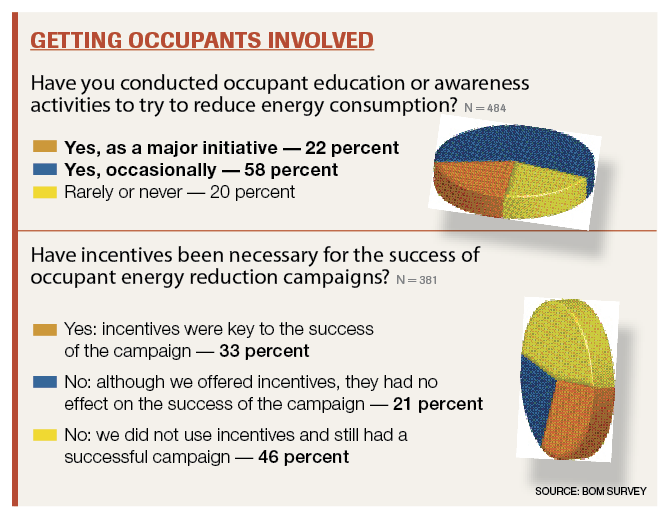Occupants Can Be Asset In Energy Efficiency Efforts
Regardless, buildings are made to serve people, not the other way around. To tap into occupants' potential to be an asset instead of a liability in energy efficiency, facility managers have to make the effort to understand why occupants do what they do and find ways to meet those needs, with as much of an eye to energy efficiency as possible.
The first thing to do when trying to get a handle on occupant energy use is simply to walk around the facility and observe the situation. Starting with the obvious, assess the plug load. How many printers does the facility have? Where are fans plugged in? It's not really important to be able to quantify the amount of energy all of these pieces of equipment use, but rather to get a sense of how many there are and how, or even if, they're being used, says Cortese. Focusing on the effect of the most numerous device — such as monitors — will have a more significant result than tracking down every last little kilowatt-hour consumed by idle cell phone chargers.
Also be sure to consider the load outside of workspaces. In research by the New Buildings Institute, server closets were clear energy guzzlers. Whereas data centers might get structured attention in regards to energy management, server closets don't get the same level of scrutiny, even though they could comprise as much as two-thirds of an office's energy use, Cortese says.
This initial walk-through is purely for information gathering; it is not the time to start lecturing occupants on their peripherals or behavior, Mazur-Stommen says. Once facility managers have compiled a list of what is plugged in or what deviances were observed, they can start digging in to understand why.
Beyond plug loads, what other areas can facility managers look for? They vary with the facility, but some general areas where occupants influence energy use are: defeating HVAC set points, blocking air vents, leaving lights on in unoccupied spaces, defeating daylighting controls and strategies, and leaving windows or outside doors open.
When someone stacks files to block air vents or has the shades pulled and the lights turned on, they're not doing it to be wicked or wasteful. "Occupants are trying, in their own way, to modify their environment for their productivity and morale," Mazur-Stommen says. "They could become partners with building operations and maintenance staff if the function of those things that are plugged in was understood."

Related Topics:
















